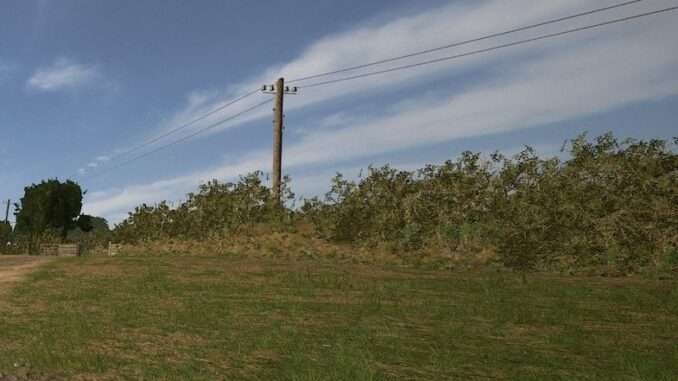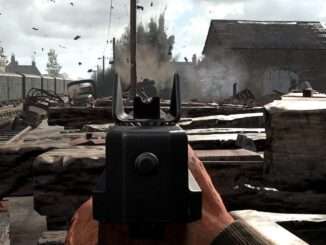
Mastering the use of tanks in Hell Let Loose is a continuous learning process that involves practice, teamwork, and adaptability. Experiment with different tank types, understand their strengths and weaknesses, and refine your strategies based on the evolving needs of your team and the dynamics of the battlefield. By becoming a proficient tank commander, you contribute significantly to your team’s success on the front lines.
Table of Contents
Tank Guide
Understanding Tank Types
Medium Tanks:
- Characteristics: Balances armor and speed for versatility.
- Usage: Suited for various roles, excelling in a mix of offensive and defensive maneuvers.
Heavy Tanks:
- Characteristics: Heavier armor but slower movement.
- Usage: Ideal for absorbing damage and leading frontal assaults, providing a formidable presence on the front lines.
Light Tanks:
- Characteristics: Greater speed and agility.
- Usage: Perfect for reconnaissance, flanking maneuvers, and disrupting enemy supply lines.
Tank Destroyers:
- Characteristics: Specialized in anti-tank combat.
- Usage: Highly effective against enemy armor, providing a significant threat on the battlefield.
Crew Roles
Commander:
- Responsibilities: Leads the tank, coordinates with the team, and operates secondary weapons.
- Tips: Maintain situational awareness, communicate effectively, and prioritize targets.
Gunner:
- Responsibilities: Controls the tank’s main armament.
- Tips: Master the use of the main cannon, understand shell types, and prioritize targets based on the situation.
Driver:
- Responsibilities: Maneuvers the tank and is responsible for positioning and mobility.
- Tips: Understand the terrain, use cover effectively, and master tank movement to navigate the battlefield with precision.
Tank Armaments
Main Cannon:
- Characteristics: Used against enemy vehicles and infantry.
- Tips: Familiarize yourself with shell types (armor-piercing, high-explosive), and adjust your strategy accordingly.
Machine Guns:
- Characteristics: Effective against infantry and light vehicles.
- Tips: Utilize machine guns to suppress and eliminate enemy infantry, and coordinate with the commander for optimal usage.
Secondary Weapons:
- Characteristics: Additional weaponry like anti-aircraft guns or mortars.
- Tips: Understand the capabilities of secondary weapons and use them strategically in specific scenarios.
Basic Tank Tactics
Positioning:
- Strategies: Utilize cover, avoid exposing vulnerable areas, and maintain a forward-facing stance when engaging enemies.
- Tips: Consider hull-down positions and use terrain to your advantage.
Supporting Infantry:
- Strategies: Coordinate with infantry for assaults or defensive operations.
- Tips: Communicate effectively, provide cover fire, and be responsive to infantry needs.
Flanking:
- Strategies: Utilize light tanks for flanking maneuvers to surprise and disrupt enemy positions.
- Tips: Exploit the mobility of light tanks to outmaneuver opponents, aiming for the sides and rear.
Communication
Squad Coordination:
- Importance: Regularly communicate with your squad to stay informed about enemy positions and coordinate attacks.
- Tips: Use a microphone for real-time communication and maintain a responsive and adaptive strategy.
Command Channel:
- Importance: Use the command channel to communicate with other tank crews and the overall team.
- Tips: Share information on enemy movements, coordinate larger strategies, and be receptive to input from other commanders.
Managing Resources
Supplies:
- Importance: Tanks require supplies for repairs and ammunition.
- Tips: Coordinate with support roles to ensure a steady supply chain and maintain your tank’s operational effectiveness.
Repair Stations:
- Importance: Utilize repair stations on the battlefield to maintain your tank’s health.
- Tips: Be aware of the locations of repair stations and plan your movements accordingly.
Adapting to the Situation
Anti-Infantry Tactics:
- Strategies: Use machine guns and high-explosive rounds to clear out infantry in urban environments.
- Tips: Prioritize targets, suppress enemy positions, and provide effective cover for advancing infantry.
Anti-Tank Tactics:
- Strategies: Prioritize enemy armor by flanking, finding weak spots, or coordinating with other tank crews.
- Tips: Aim for vulnerable areas such as tracks and rear armor, communicate with other tank crews for focused attacks.
Survival Tips
Listening for Sounds:
- Tips: Tanks emit distinctive noises; listen for enemy tank sounds to anticipate their presence.
- Advisory: Use headphones for better audio cues.
Smoke Screens:
- Tips: Deploy smoke screens to obscure vision and make a quick escape from unfavorable situations.
- Advisory: Use smoke strategically, considering both offensive and defensive scenarios.
Advanced Tactics
Combined Arms:
- Strategies: Coordinate with infantry, recon squads, and other armor for a powerful combined arms strategy.
- Tips: Foster effective teamwork, share information, and adapt strategies based on the evolving dynamics of the battlefield.
Ambushes:
- Strategies: Use terrain and cover to set up ambushes for enemy tanks.
- Tips: Exploit the element of surprise, communicate with other tank crews for coordinated ambushes.




Be the first to comment